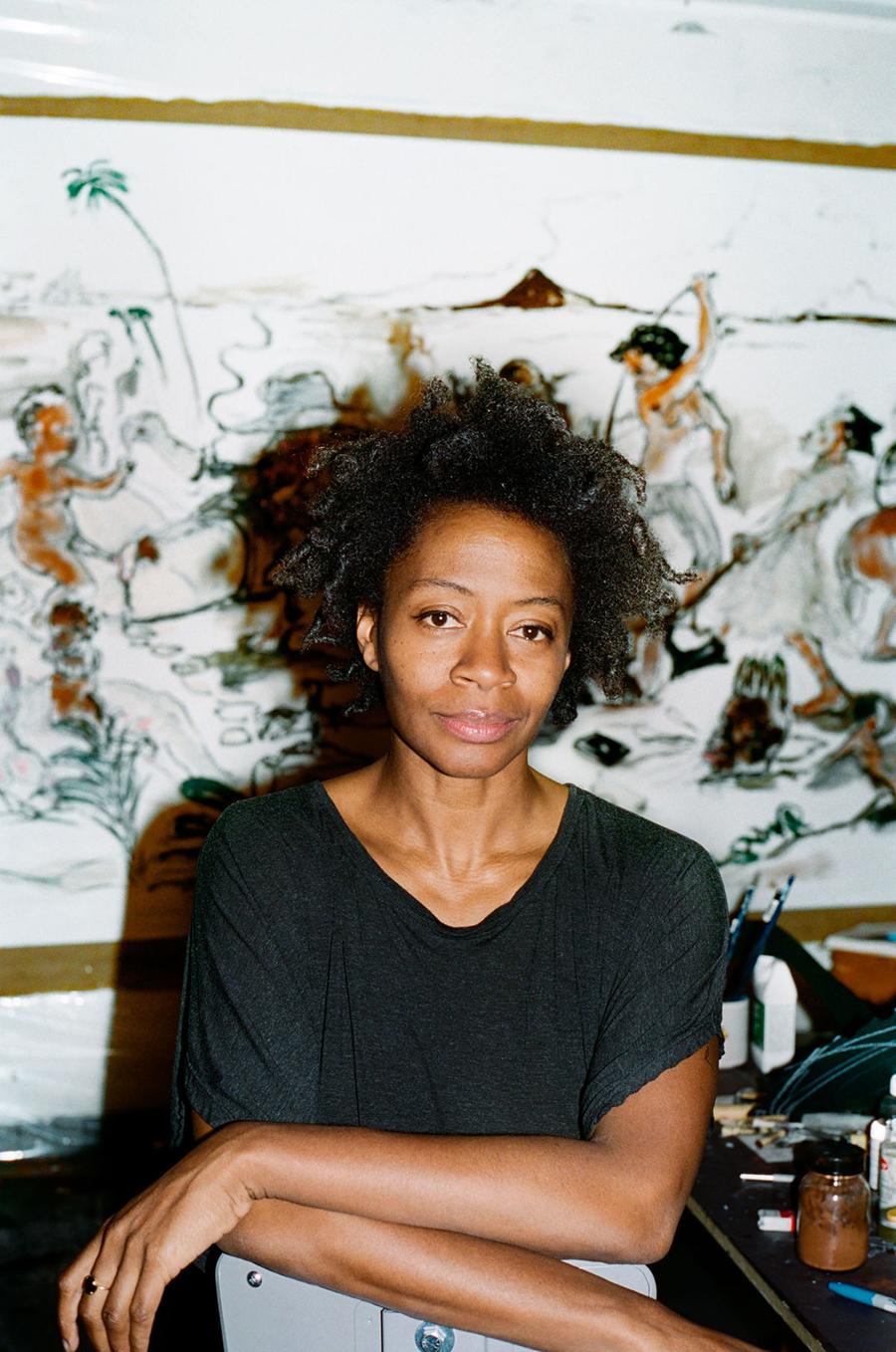Artists and Writers Imagine a Post-Pandemic World
In homage to Italo Calvino’s ‘Six Memos for the Next Millennium’, artists from Kara Walker to Collier Schorr, explore his six artistic virtues
In homage to Italo Calvino’s ‘Six Memos for the Next Millennium’, artists from Kara Walker to Collier Schorr, explore his six artistic virtues

This past spring and summer, with international galleries and museums closed, we faced a problem: how to fill the reviews section of the September issue of frieze magazine, which would have normally contained the previous months’ exhibition reviews? As writers weren’t able to see shows in person and galleries were either closed (some forever) or reorganizing their programmes, we had the unique opportunity to commission a suite of new essays for print. The subsequent series brought together voices from across the art world to loosely respond to Italo Calvino’s Six Memos for the Next Millennium (1988), in a section we optimistically titled ‘Memos for the Future’. Calvino organized his original lectures into six artistic virtues: ‘lightness’, ‘quickness’, ‘exactitude’, ‘visibility’, ‘multiplicity’ and ‘consistency’. I’ve returned to these dynamic responses to draw out some of the key ideas to take with us into the New Year.

‘Witnessing History Begets Forgetting’
For artist Kara Walker, the pandemic confounded existing societal injustices. Her view of ‘post-pandemic world’ imagines a situation where the working poor aren’t dying as proxies for a failed state:
‘Witnessing history begets forgetting. For every day and every week in our ‘quarantine’, ‘self-isolation’, ‘lockdown’ or ‘shelter in place’, some wise fool asks us to consider the effects of social distancing, as if segregation weren’t already a reality.’
In her piece on the repetitious nature of living in isolation, author Alexandra Kleeman also draws attention to the often-nameless labour of key workers during the pandemic:
‘In the catastrophic stillness, there is time to notice whose labour brings your mail or stocks the supermarket shelves, whose consistency and whose risk sustains your life.’

‘The Oppressive Pull of Reality’
For many this year, television and film provided a welcome respite from what Chloe Aridjis terms in ‘the oppressive ground pull of reality’. She writes in a piece on Ingmar Bergman’s Fanny and Alexander (1982):
‘In Fanny and Alexander [Bergman] emphasizes the importance of creating one’s little world within the larger one beyond, to escape into spaces where the stifling concreteness of reality temporarily dissolves, or at least wears a different face.’
Elvia Wilk, on the other hand, decided that to overcome the immediate challenges of the present she would dive into her own work. However, the act of writing during a pandemic wasn’t as straight forward as she initially hoped:
‘Writing is never particularly easy; it’s always work. But, since the pandemic began, writing about anything – pandemic or otherwise – has felt more difficult to me than ever before. Describe a global crisis in 600 words? Too hard. But isn’t everything else irrelevant right now?’

‘A New Slowness’
In response to Calvino’s idea of ‘quickness’, author Sarah Manguso writes about ‘re-inventing slowness’ through ‘retro pleasures’ while in lockdown with her young son:
‘Children, who are used to creating and synthesizing the world, instinctively invent, and my son is summoning a new slowness while he watches his parents do the same. No more running to the store anytime anyone has a hankering; no more rushing to and from school or the taekwondo dojang; no more infernal birthday parties. We clean the house together. We eat lunch together.’
For musician David Grubbs, the pandemic also provided an opportunity to reflect his relationship with pace, this time in terms of music production and distribution:
‘Given the convergence of public health emergency and digital technology, the speed with which music appears and asserts itself in 2020 provides us with the opportunity to experience so much musical activity anew – as onrush – and enables us to understand the quickness that was already at its core.

‘Rethinking Community’
Nisha Ramayya evoked the Tantric Hindu myth of Satī, Albert Einstein’s theory of relativity and relation’s science and French philosopher, Édouard Glissant, as a way into rethinking the make-up of communities during the pandemic:
‘The pandemic manifests the reality of our interrelation, the density and ineluctability of that entanglement, its potential for support and harm. As Édouard Glissant writes in The Poetics of Relation (1990): “Relation contaminates, sweetens, as a principle, or as flower dust.”’
Glissant also serves as a reference point for curator Bonaventure Soh Bejeng Ndikung in his essay on Black multiplicity, which followed in the wake of Little Richard’s passing in May:
‘What if it wasn’t because he [Richard] was “too black, too queer, too holy” but because he dared to be queer and holy, while black, or dared to be black and queer, while holy? These are the limits to being multiple in a world that prescribes and imposes singularity.’

‘A Matter of Life and Death’
In response to Calvino’s text on ‘visibility’, novelist Helen DeWitt and statistician Andrew Gelman combined their respective expertise to examine how the expression of data is of vital importance:
‘In the current moment, people who have never previously given much thought to data visualization will see information presented in narrative form without fully appreciating how the effectiveness of its communication can, in some cases, be a matter of life and death.’
In her essay ‘Seeing and Being Seen on St. Mark’s Place’, Collier Schorr remembers her time in New York in the 1980s when visibility, illness and sexuality were in conflict:
‘I wonder how many people in the 1980s, during the AIDS epidemic, were privately conflicted about their expectations that other people forgo a sexuality that was so hard won. To be visible now is a conflict. To be seen out is problematic.’
The collective essays were published in frieze no. 213 September 2020 with the title ‘Memos for the Future’
Main image: Felix Gonzalez-Torres, “Untitled” (Perfect Lovers), 1987–90, wall clocks, 34 cm diameter each. Courtesy: © Felix Gonzalez-Torres Foundation























